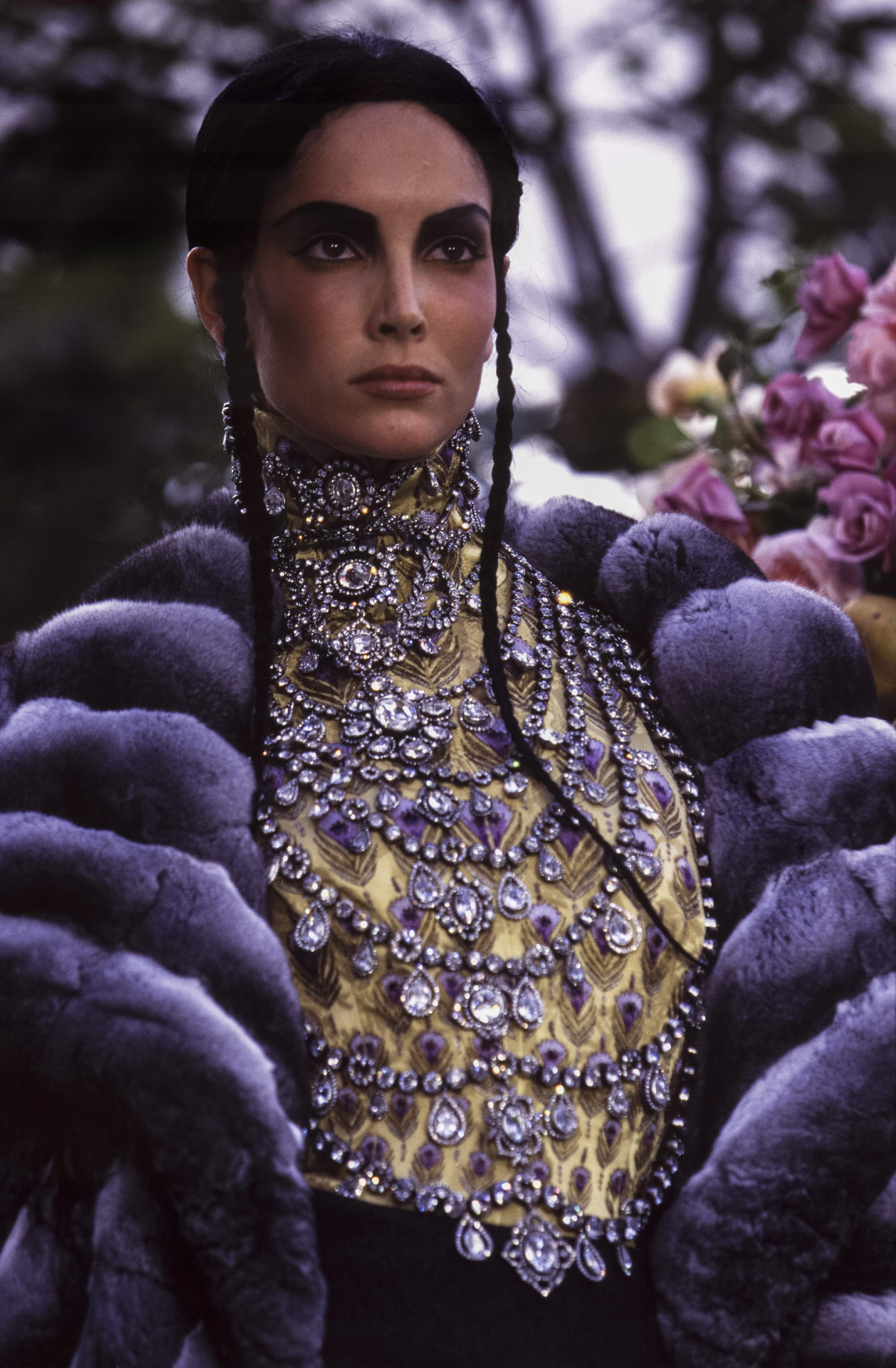
BACK TO TOP
How India came to secure a permanent spot on Dior’s runways
From the drape of a sari to the exquisite handwork of artisans, we trace the history between the country and the couture houseBy Neharika Manjani | 27th Mar 2023
If you spend some time studying Dior’s spring/summer 2022 show at Paris Haute Couture Week, you’ll quickly learn that it made countless headlines for reasons other than the elegant monotone looks that were sent down the runway. It was the intention of Maria Grazia Chiuri, the couture house’s current creative director, to draw the audience’s attention towards the mise en scène instead. The walls of the venue—the collection was showcased at the Musée Rodin in Paris—were covered in their entirety with a total of 22 artworks by Delhi-based artist couple Madhvi and Manu Parekh. Each of the duo’s paintings had been transformed into gargantuan, meticulously embroidered tapestries by Mumbai’s Chanakya School of Craft. For Chiuri, the installation, which involved 340 square meters of fabric that took over 200,000 hours to embroider, had one purpose to serve—to spotlight the skills of India’s artisans.
Loyalists of the label might already be aware that this isn’t the first time India was referenced on Dior’s runways. For decades now, the country’s rich textile traditions have routinely shaped everything from the sets to the styles of the hallowed house. Ahead, we examine how the many significant names who sat at the helm of the storied label paid tribute to India in their own unique way over the years.

The beginning of the love affair
When Christian Dior travelled to Asia, he was drawn to the luxurious fabrics and embellishment techniques that he discovered during his time there. His fascination with India in particular can be traced back to the house’s earliest collections. It was in 1955 that the gallerist-turned-designer created his famous ‘Soirée de Lahore’ evening dress. The intricately embroidered ensemble, which was teamed with a turban, brought together in complete harmony the iconic new look silhouette and a waist-to-shoulder drape that evidently took its cues from the sari. This eagerness to conduct sartorial experiments with varied attributes of the six-yard staple was a trait that was also seen in Monsieur Dior’s successors. Toward the tail end of his near three-decade-long tenure at the Maison, Marc Bohan designed his ‘The Indian Year - Pyramid and Sari Line’ collection, which had, at its core, light-as-air gowns that bore an unmissable resemblance to chiffon saris.
Not too long after, in 1996, Italian couturier Gianfranco Ferré, who had spent a great deal of time in India before he was anointed artistic director at Dior, delivered another India-inspired collection called ‘India Passion’ for his final show at the label. At the majestic Grand Hotel ballroom in Paris, with the house’s many celebrity patrons in attendance, models strutted down the ramp in a range of ornate outfits—think fairy tale-worthy gowns, statement-making suits and several sari-like silhouettes—that served as Ferré’s ode to India. Lustrous jacquard silks, colours reminiscent of the country—the palette included the likes of rani pink and Bengal red—and a generous dose of zardozi and resham work were commonplace in the opulent line-up. Star styles, which also drew their names from India, included the ‘Shalimar’ dress and the ‘Bangalore’ dress. While the former was a gossamer black and gold sari-gown hybrid, the latter featured a sumptuous silk jacket and a mesh skirt with the most detailed handwork. In 1993, Ferré presented a piece in the haute couture collection inspired by the Kashmir shawl.

India’s impact on Dior
However, India’s impact on Dior extends beyond its embroidery and the key characteristics of a sari. When John Galliano took the reins at the Maison, he shifted the focus to the country’s exquisite jewels. In 1997, his autumn/winter haute couture show—which took place on an uncharacteristically warm day at the Parc de Bagatelle in Paris—opened with Galliano’s ‘Raj Princesses’ in sleek tailored looks paired with hard-to-miss Maharajah-inspired headdresses and breastplate necklaces by Parisian jewellery brand Goossens.
Today, almost 80 years since the French fashion house came into existence, Chiuri continues to creatively celebrate the country’s crafts. By consistently highlighting her association with Indian artisans on the sets of her shows—the Chanakya School of Crafts has, till date, been commissioned three backdrops for Chiuri’s collections—and on her creations, she, like her predecessors, is establishing that India’s presence on Dior’s runways is anything but fleeting.
‘India in Fashion: The Impact of Indian Dress and Textiles on the Fashionable Imagination’ is curated by British author, journalist and costume expert Hamish Bowles, and designed by Patrick Kinmonth with Rooshad Shroff. The exhibit will be on view at Pavilion 1, Nita Mukesh Ambani Cultural Centre, Mumbai, from April 3 to June 4, 2023.

